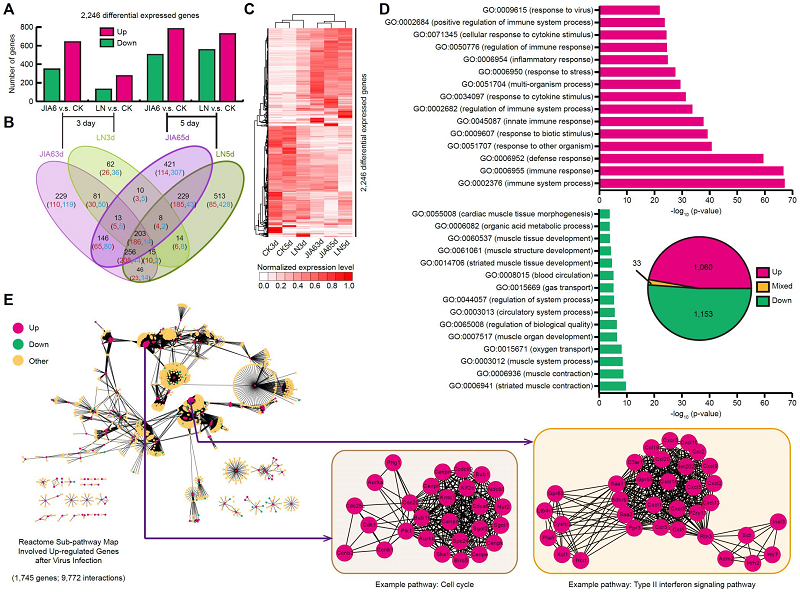Insights into the increasing virulence of the swine-origin pandemic H1N1/2009 influenza virus.
Zou W, Chen D#, Xiong M, Zhu J, Lin X, Wang L, Zhang J, Chen L, Zhang H, Chen H, Chen M, Jin M
Sci Rep. 2013;3:1601. doi: 10.1038/srep01601.
Pandemic H1N1/2009 viruses have been stabilized in swine herds, and some strains display higher pathogenicity than the human-origin isolates. In this study, high-throughput RNA sequencing (RNA-seq) is applied to explore the systemic transcriptome responses of the mouse lungs infected by swine (Jia6/10) and human (LN/09) H1N1/2009 viruses. The transcriptome data show that Jia6/10 activates stronger virus-sensing signals, such as the toll-like receptor, RIG-I like receptor and NOD-like receptor signalings, as well as a stronger NF-魏B and JAK-STAT signals, which play significant roles in inducing innate immunity. Most cytokines and interferon-stimulated genes show higher expression lever in Jia/06 infected groups. Meanwhile, virus Jia6/10 activates stronger production of reactive oxygen species, which might further promote higher mutation rate of the virus genome. Collectively, our data reveal that the swine-origin pandemic H1N1/2009 virus elicits a stronger innate immune reaction and pro-oxidation stimulation, which might relate closely to the increasing pathogenicity.
